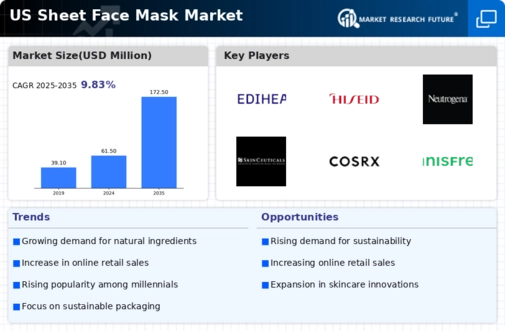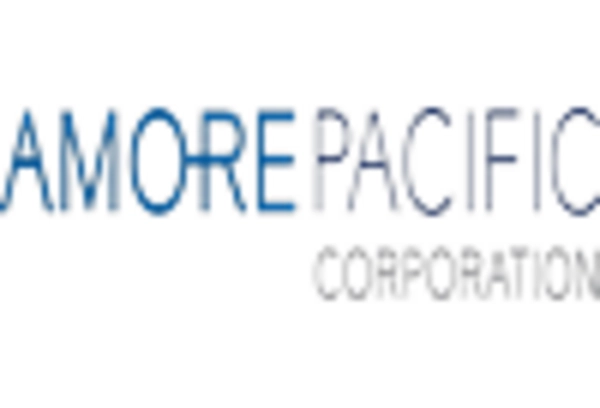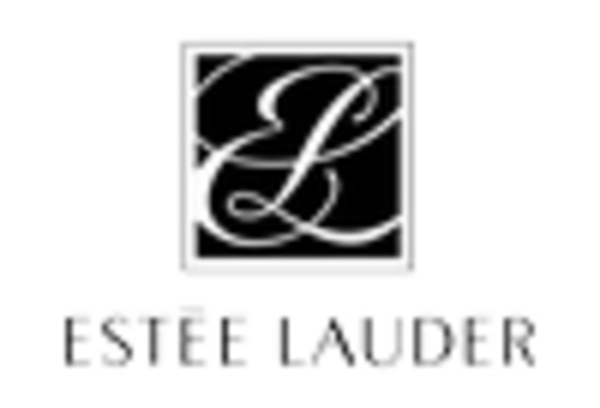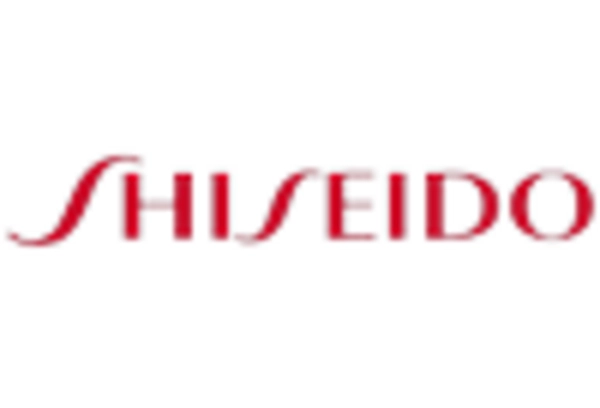Expansion of Retail Channels
The expansion of retail channels is a crucial driver for the sheet face-mask market. Traditional brick-and-mortar stores are increasingly incorporating sheet masks into their product offerings, making them more accessible to consumers. In 2025, it is estimated that retail sales of beauty products in the US will exceed $80 billion, with sheet masks representing a growing segment. The sheet face-mask market benefits from this trend as retailers enhance their beauty sections to include a variety of options, catering to different skin types and concerns. This increased availability in physical stores allows consumers to experience the products firsthand, fostering brand loyalty and encouraging impulse purchases. As retailers continue to adapt to consumer preferences, the sheet face-mask market is likely to see sustained growth.
Influence of E-commerce Platforms
The proliferation of e-commerce platforms is reshaping the distribution landscape of the sheet face-mask market. With the convenience of online shopping, consumers are increasingly purchasing beauty products, including sheet masks, through digital channels. In 2025, e-commerce sales in the beauty sector are expected to account for over 30% of total sales in the US. This shift towards online retailing allows brands to reach a broader audience and cater to diverse consumer preferences. The sheet face-mask market is likely to see enhanced growth as brands invest in online marketing strategies and optimize their e-commerce platforms. Additionally, the availability of customer reviews and product comparisons online empowers consumers to make informed purchasing decisions, further driving sales in this segment.
Innovations in Product Formulation
Innovations in product formulation are driving advancements within the sheet face-mask market. Brands are increasingly focusing on developing masks that incorporate unique ingredients and technologies to enhance efficacy. For instance, the introduction of biodegradable materials and advanced serum formulations is becoming more prevalent. The sheet face-mask market is witnessing a surge in demand for masks that offer targeted solutions, such as anti-aging, brightening, and hydration. Market data suggests that products featuring natural and organic ingredients are gaining traction, with consumers willing to pay a premium for quality. This trend indicates a shift towards more sophisticated offerings, as brands strive to differentiate themselves in a competitive landscape. As innovation continues to shape the market, the potential for growth remains robust.
Growing Demand for Skincare Products
The increasing consumer awareness regarding skincare is driving the sheet face-mask market. As individuals become more conscious of their skin health, the demand for effective skincare solutions rises. In the US, the skincare market is projected to reach approximately $24 billion by 2026, with sheet masks being a popular choice due to their convenience and efficacy. This trend indicates a shift towards products that offer immediate results, which aligns with the preferences of modern consumers. The sheet face-mask market is likely to benefit from this growing demand, as consumers seek products that provide hydration, nourishment, and rejuvenation. Furthermore, the rise of social media influencers promoting skincare routines has amplified interest in sheet masks, making them a staple in many beauty regimens.
Rising Popularity of Self-Care Trends
The self-care movement is gaining momentum, significantly impacting the sheet face-mask market. As individuals prioritize mental and physical well-being, the demand for products that promote relaxation and self-pampering is on the rise. The sheet face-mask market is well-positioned to capitalize on this trend, as these products are often associated with at-home spa experiences. Market Research Future indicates that 70% of consumers in the US engage in self-care activities regularly, with sheet masks being a favored choice for their ease of use and instant gratification. This growing emphasis on self-care is likely to drive innovation within the industry, as brands develop new formulations and experiences that cater to the evolving needs of consumers seeking comfort and rejuvenation.

















Leave a Comment